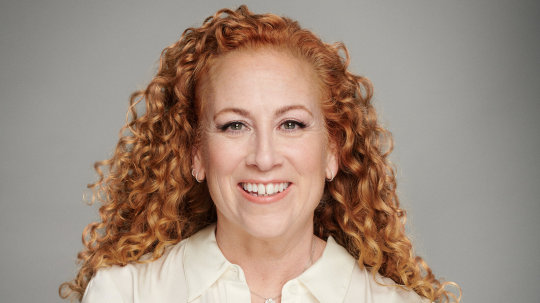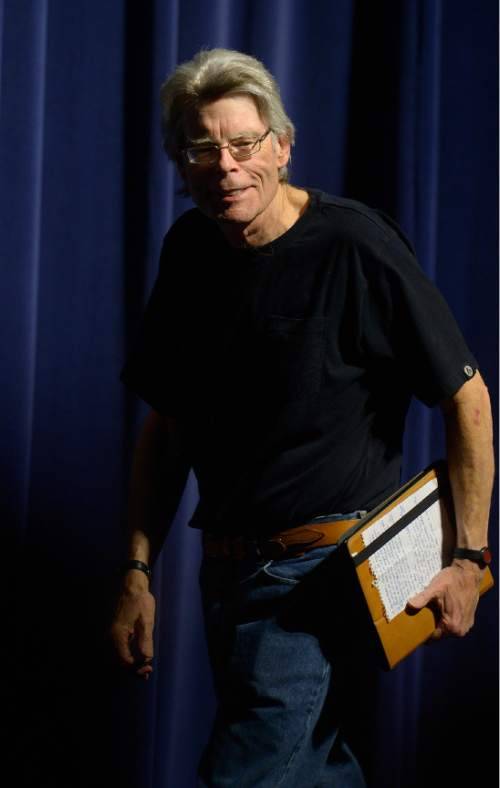Text
Writing Log #7: Finding CNF Inspiration
Shortly after legendary shortstop Derek Jeter retired from Major League Baseball in 2014, he entered a partnership with Jaymee Messler, the chief marketing officer of Excel Sports Management. Messler and Jeter sought to establish a media platform that would feature daily sports conversations and first-person stories from professional athletes. In October of that same year, their efforts culminated into The Players' Tribune.
Over its eight year life online, The Tribune has presented stories from some of the biggest names in sports, including: Russell Wilson, Richard Sherman, Pelé, Brandi Chastain, Trevor Lawrence, Kevin Love, and more. One of The Tribune’s most popular series, Letter to My Younger Self, gives current and retired athletes the opportunity to look back on their careers in professional sports. Chastain’s and Pelé’s Letters are often considered to be the highlights of the series … but one of the most insightful entries came from a man whose name remains synonymous with words like bust, failure, and disappointment in the National Football League: Ryan Leaf.
In the late 1990s, Leaf appeared to have it all going on for him: his college career as quarterback for the Washington State Cougars had made him a finalist for the Heisman Memorial Trophy and he was selected second overall in the 1998 NFL Draft by the San Diego Chargers. The Chargers immediately gave him a starting position and he won his first two games with them. Unfortunately, a staph infection he sustained early in the season detonated the atomic bomb that his career…
Bouts with the media, poor on-field performance, drug addiction, legal issues, and his immature, egoistic attitude cost him everything. He was crowned the biggest draft bust in NFL history by NFL Top Ten, booed and chastised wherever he went, and eventually arrested in 2012 for breaking into a Montana home while hunting for painkillers. During Leaf’s thirty-two month stint in prison, his cellmate convinced him to start teaching other inmates to read. He described it as “the first time in [my] life that [I] did something for someone else.” (Leaf, The Players' Tribune) When he was later released from prison, he turned his life around; he stayed sober, continued helping those less fortunate than him, began motivational speaking, and offered commentary on professional sports.
Leaf’s letter to himself is centered around an idea that everyone has fantasized about at one point: what would you say if you could go back in time and talk to your younger self? It’s full of stylistic and aesthetic language that reflects on the arrogance of his youth and encourages kindness towards others. It paints the individual who introduced him to addicting painkillers in a questionable picture … but the person whose ethics are frequently criticized is himself. Like any creative nonfiction piece, someone could read Leaf’s letter and say: “That’s not how it happened.” However, he doesn’t spend the entire letter lambasting others or placing blame; he recognizes how he acted and wishes, more than anything, that he could’ve been better.
Leaf’s not afraid to look back on his mistakes. He knows his place as “the biggest draft bust in NFL history” and clearly explains how everything turned out the way it did. Obviously, I’ve never played sports professionally … but I’m still incredibly inspired by this. Even if I don’t write a CNF piece that criticizes my past actions, I can study Leaf’s reflective and personal language and apply it to my own work.
Works Cited
Leaf, Ryan. “Letter to My Younger Self.” The Players' Tribune, Minute Media, 26 Apr. 2017, https://www.theplayerstribune.com/articles/ryan-leaf-nfl-letter-to-my-younger-self.
0 notes
Text
Writing Log #6: Six Word Memoir (Flash Fiction)
Before I share some of the six word memoirs that I wrote, I'd like to briefly dive in to the pros and cons of this format. Now that I think about it, however, I realize that the format's greatest strength is also it's greatest weakness:
They're brief.
On one hand, this allows for digestible and descriptive sentences. You don't have to comb through twenty plus word-long sentences in order to get an idea across and you can focus more on the essential moments of your life.
With that being said, you also can't go into a great deal of detail. Your six word memoirs can often come across as ambiguous because you simply don't have the word space to explain them. Which selfless and unyielding individuals inspired me? What was I sprinting from with a red face and pounding chest? Who had eyes that had the color of blue dancing oceans? These are all questions that I can't answer within the six word limit.
Still, they're a useful resource. Employing these within my writing gives me the ability to break up my text and be more creative/descriptive ... even if I'm writing a non-fiction piece.
The meaning of life is connection.
My home: crowded, busy, yet soothing.
Selfless and unyielding, they inspired me.
While they played, I walked alone.
I scoured my unending, abundant imagination.
Triumphant, I bowed to the audience.
Face red, chest pounding, I sprinted.
Blue oceans danced in her eyes.
Cared about nothing, worried about everything.
The key is pure, relentless curiosity.
0 notes
Text
Writing Log #5: Writing in Digital Studies versus Analog
Today, I am going to be talking about how digital affordances and constraints have influenced how I write. Sadly, there won’t be much time for Parseltongue or Joker impressions, so I apologize if that’s what you’re here for.
When I read the excerpt from Understanding Digital Literacies, the biggest thing that stood out to me actually showed up early on in the text. It said: “[Digital media] allows us to participate in many practices simultaneously - we can work and study and shop and hold conversations with any number of people at the same time.” (Jones, Hafner 13) When I think about this, and how it relates to our modern society, the one word that kept coming to my mind is tabs. Now, as I’m sure you’re all aware, tabs are the clickable areas at the top of your computer window that lead you to different sites. It’s a system that we really take for granted in our day-to-day lives … which is kind of amazing when you think about it! Can you imagine telling someone in the 1960s that one day … you’d be able to file your tax return, listen to the newest and hottest album, book dinner reservations, and say hello to your friend all at the same time on a device that fits into your pocket?
Tabs are, more or less, a metaphor for how we live our lives, aren’t they? Digital affordances have presented us with the opportunity to be in multiple places at once. In some ways, it’s a good thing; it’s certainly made our lives more convenient and Like Christoph Hagner and Rodney Jones said, the Internet isn’t just a singular entity; “it’s a range of practices, software and hardware technologies, and modes of representation of interaction.” (Jones, Hafner 13) The term “surfing the web” is almost phasing out from our world because of how ambiguous it is. When someone says that they’re surfing the web … what exactly do they mean by that? Are they asking Google random questions? Are they shopping online? Are they reading the news? Are they watching a livestream? Are they talking with someone on Twitter? Are they doing all of those things? Are they doing none of those things? That’s the kind of environment that our digital affordances have created for us.
So, with that being said, how does this translate into how I write? The basic answer is that I have different styles that I employ in different situations … regardless of whether someone is behind a screen or staring straight at me. How I write an email to my boss is different from how I’d text my mom which is different from how I’d respond to someone who left a negative comment on my Reddit post. But, that’s not really unique; everyone does that. On my blog, how I get my points across is a little more complicated:
The person who looks at my blog the most is the professor of this class; this person has power over my grades which can impact my final grade in this class which can impact the progress in my degree which could potentially impact my finances and so on and so forth. So, whenever I write here, I try to make sure that everything is as professional and easy to read as possible. I clearly label my blog posts so it’s easy to navigate and I try to avoid informal language like swearing or slang. However, I’m also not beyond including elements in my blog posts that aren’t strictly professional … but do add to the content and make it more engaging.

I didn’t have to include photos of the authors I chose to study in Week Two, but I did because I thought it would be more visually appealing than a long block of text.

I didn’t have to color code my visual literacy thoughts, but I did it because I thought that it would represent where my thinking was more clearly.

I also didn’t have to crop and cut the image in my visual literacy journal to show exactly what I was talking about, but I did it because I thought that the reader could then look at what I was saying, see it in the pictures, and then say: “Oh, yeah. I can see how he’d think that.”
Now … as for whether any of this is “professional” is up for debate. I believe that what I’ve done on my blog still maintains a level of professionality to it and I’ve gotten good feedback on it.
I wonder what these blog posts would look like if I wasn’t allowed to use any digital format. What if I had to compose my thoughts the way they did in “the olden days” with a pencil and lined paper? I could still color code my text and include images onto the page … but I don’t know if it’d look as professional as it does on a digital landscape…
WORKS CITED
Jones, Rodney and Christoph Hafner. Understanding Digital Literacies, pg. 13-14
0 notes
Text
Writing Log #4: Writing for Aural Delivery Transcript
TRANSCRIPT
Hello! Hi! How are you? Nice to see you, listen to you, talk, chat with you, whatever this is gonna look like. For those of you who are new here, welcome to my blog! This is An Hour with David. For those of you who are returning, good to see you back! Today, I’m going to be talking with you for a little bit about language and the role that it plays in our world, but, more specifically, the role that it plays in fiction and characters.
Now, I’ve gotta confess; I’ve been pretty stumped about this for the past week. I haven’t been sure what to talk about, so I decided to do the natural thing and just fall asleep to my favorite comfort show instead. My favorite comfort show is Family Guy. I’ve watched the first three-to-five seasons of Family Guy more than, I think, any other person on the planet. It may sound odd, but it’s just very … soothing and relaxing to me. It’s something I jump to whenever I need simple, quick entertainment that’s gonna calm me down. As I was laying down in bed watching this, I started to notice something in an interaction between two of the characters that I think ties really neatly into this topic of language that we’re talking about and I’m gonna let you listen to it here for a little bit:
LOIS GRIFFIN: Look at this food! It’s gross and unhealthy. It’s exactly the stuff I’m trying to get you not to eat! PETER GRIFFIN: Yeah, but people like this food! It makes them happy. You could eat sprouts and vegan crap your whole life and still get devoured by gremlins and none of it matters. LG: So, you’re saying you shouldn’t take care of yourself because you might get devoured by gremlins? PG: Get a clue, Mamma. LG: Think of what you’re doing to your body, Peter! PG: Oh, there we go. You think I’m overweight. LG: I know you’re overweight! (Robertson 2017)
So, without me even showing those characters to you onscreen, you get a sense of who they are and what they’re about because of the way that the voice actor and actress are putting character into the language of these words: Lois has this very nasally, scolding tone to her voice which makes sense because, throughout the show, she’s a wife and mother who’s constantly looking at what Peter does with disdain and disgust and confusion … as mothers sometimes do. Peter, on the other hand, is a little more complicated; Peter is, as the creator of Family Guy Seth MacFarlane described it, based on a security guard he knew in college that used to talk like that. Peter’s language is being influenced by another individual that the creator actually met throughout his life; but, in addition to that, he has this very dimwitted, nonsensical, simplistic way of looking at things. He’s referencing Gremlins when his wife is trying to talk to him about eating healthy; from that, you can deduce that Peter has this strong affiliation with pop culture and nonsensical arguments. He says things that don’t really make sense and you’re able to get all of that here through the way that these characters’ language is being dictated.
So, what if I play this on another level? What if I play for you a language that doesn’t exist in the real world … but exists in fantasy? Something like this for instance: [PARSELTONGUE SOUNDS] (Columbus 2002) Now … does that sound like something that the Care Bears or the Teletubbies would sing? It’s not. It has this hissing quality; this sinister venom dripping off of the language because in the universe that this is set in, if you know you know, it’s representing a darkness. It’s not a good ability to have this language or be able to speak it. The serpents in this world are closely tied to biblical assertions of serpents, which is that they’re very dangerous and destructive and deceptive. And that’s the vibe that you get when you hear actors enunciate this language like that. What if I, then, play you like something like this instead? [ELVISH LANGUAGE SOUNDS] (Joddle 2017) Now, again … if you know, you know. This language is much more enunciated and elegant; it almost flows off the tongue. It was based off of Finnish and Welsh. This language of course being J.R.R. Tolkien’s Elvish from Lord of the Rings. It’s spoken by elves; figures that have this stoic, authoritative, demanding, emotionless appearance throughout the story. And you get that vibe throughout the language.
So, I’m going a little bit over, but I want to do one last exercise to get the point across. This is a passage from one of the most famous Batman stories of all time (I know, I know. Stay with me here). This is a passage from The Dark Knight Returns that a character makes as they’re making a speech to a group of individuals. I’m going to read this three different ways: in my normal voice, in my impression of how The Joker would read it, and in my impression of how Batman would read it. I want you to listen to it and try to pick up the subtleties to it. Obviously, I’m not a voice actor. So, this may end up coming out really bad, but I’m going to give it a try here and I want you to tell me what you think of how the way I use language ties into your interpretation of the text: This loud, clumsy, stupid thing. This is the weapon of the enemy! We do not need it. We will not use it! Our weapons are quiet, precise. In time, I will teach them to you. Tonight, you will rely on your fists and your brains. Tonight, we are the law! Tonight, I am the law! Let’s ride! (Miller 1986)
Works Cited
Columbus, Chris, director. Harry Potter and the Chamber of Secrets. YouTube, Warner Bros. Pictures, 2002, https://www.youtube.com/watch?v=UGMlEd0em8w. Accessed 6 Mar. 2023.
Joddle, Jade, director. Relax to the Sound of Elves | The Elvish Language. YouTube, Google, 7 Sept. 2017, https://www.youtube.com/watch?v=xjaDnubQIII. Accessed 6 Mar. 2023.
Miller, Frank. Batman: The Dark Knight Returns. DC Comics, 1986.
Robertson, Steve, director. Family Guy: Saturated Fat Guy. Hulu, The Walt Disney Company, 19 Mar. 2017, https://www.hulu.com/watch/7b209353-cbe7-445b-89ef-5658cf6e8ed6. Accessed 6 Mar. 2023.
0 notes
Text
Writing Log #3: Visual Literacy
A trait that I love and hate about myself is that I’m analytical. On one hand, it’s a blessing because it benefits my professional life; I can examine situations through multiple perspectives and I excel at subjects like English and Social Studies. On the other hand, it’s a curse because it complicates my personal life; I obsess over my mistakes, dwell on the past, and take things way too personally. Fortunately, today is one of those days where I find myself blessed by my analytical skills…

For this log, I decided to sequentially record my initial thoughts on the attached photograph with no context, my thoughts and feelings after learning the context behind the image, and my reflection on how this exercise ties in to visual literacy:
INITIAL THOUGHTS - The first thing that catches my eye is the smoke over a building off into the distance.

Based on the fact that the city in the background is close to the water and has several bridges, I’m inclined to say that I am looking at New York City … but I could be wrong.

From that same inclination, the only historical event I can think of where that much smoke could be seen from that far away in New York City is the terrorist attack on the World Trade Center on 11 September 2001. Though, again, I could be completely wrong; maybe there’s some other tragic event from New York City’s history that is being captured here?



Regardless of what the smoke is coming from, it's a shame that it captures the focus of the image. The location in which this photo was taken appears to be a beautiful and peaceful environment; my first guess is some kind of park based on the view of the water, the architecture of the environment, the presence of a bike, and the abundance of green trees and plants.
Again, though, I could be wrong; perhaps it's outside of a museum or a restaurant or a bar? Perhaps, wherever and whatever this place is, it’s not as beautiful as it seems? Maybe this photograph just happened to be taken in one clean and idyllic spot and the rest of the location is full of graffiti, trash, and used needles? And then there’s the people being photographed: what’s the story there? If they were all facing away from the water, I might see how they might miss the smoke … but surely the individuals in the orange and white shirts would say: “OH MY GOD! LOOK!” at the image in front of them.

Why do they exhibit such relaxed postures? Laying back, slouching over, sitting down; it’s like they don’t have a care in the world. Or … maybe it's the exact opposite.

What if … someone in this photo, perhaps the woman with curly hair who’s wearing sunglasses, saw what was going on and experienced a panic attack? Maybe then a group of strangers, or people who were with her from the beginning, told her to lie back and relax while they try to calm her down? What are they talking about? Maybe they’re talking about music or sports or a TV show or food or their families; anything to try to snap attention away from the tragedy. Maybe they’re all trying to calm down as someone out of frame calls for help or checks in with someone? Well … there’s only one way to find out…
AFTER CONTEXT - Well, I’m not surprised to learn that this picture was taken during 9/11. As I previously stated, it's something that my mind, for better or worse, automatically went to when I saw the smoke. I’m also not surprised that the photographer, Thomas Hoepker, chose not to include this picture in his book of photographs from 9/11; regardless of whether or not it is true that these individuals were shocked … that is not what it looks like here. Even relooking at this photo after reading the context, I keep drawing the assumption that everyone photographed is relaxed and comfortable. However, yet again, I could be completely wrong; maybe this photograph was taken a few seconds before someone burst into tears? I just noticed that everyone in this photo is sitting down; perhaps they were so shaken by what was going on before them that they had to relax lest they pass out, vomit, cry, or experience a panic attack. I have no idea what anyone in this photo is talking to each other about. Maybe they’re saying things like: “I can’t believe this…” or “I don’t know what to say…” or “This is unbelievable!” or “I have a buddy who’s in the Marines; he talked about something like this happening one day…” The only reason that lines like those come to mind are because they’re what I heard from my family while we watched the coverage of the 2021 Capitol Riot. We just don’t know. Even if one of those individuals explains what was going on, they might be lying so that they won’t look ignorant. The only ones who know are the people who were there…
VISUAL LITERACY REFLECTION - I don’t know if Hoepker thought while he took this photo: “This is gonna win me a Pulitzer!” or “This is going to become the photograph of [9/11]!” I have to wonder if he would feel uncomfortable about this photo being discussed in academic environments; after all, he was apprehensive about publishing it in the first place. From what I’ve heard from artists, few of them create it with the intention of changing the world or inspiring someone or setting an example; it’s something that kind of just … happens. I cannot feel or hear or relive this image; I have to rely on icons and the assumptions I can make within the image. This is the reality of the modern world. Just because we see or hear it … that doesn’t mean we understand it. Being visually literate can help you break down an image and create some theories … but it's not the same as being then and there in the moment. You can watch an entire performance of your favorite artist for free on YouTube; but people will always still pay to go see them live. Why? Because visual literacy can only get you so far. Even if, for the sake of the argument, a technology was invented that could bring you back to any moment you wanted in history; it wouldn’t be the same as experiencing it just for that one, singular moment. Visual literacy can only get us so far...
4 notes
·
View notes
Text
Writing Log #2: Researching Writing Processes
I have so many questions that I would love to ask my favorite writers. However, I wanted to focus on the purpose of writing. More specifically, I wanted to know what writers want their readers to walk away with. Obviously, all writers want as many people as possible to read their work so that their efforts can warrant a return … but what do they want besides that? How do they feel about their books being taught in curriculums? Do they expect anything beyond their readers being amused, horrified, entertained, excited, etc. by the contents? Do they hope that readers will apply the lessons of the writings to their everyday lives? Do they write every book with the intention of teaching readers a lesson? What do writers want?
I decided to examine this question through the eyes of three different authors: Jodi Picoult, J.K. Rowling, and Stephen King. I didn’t select these authors just because they’re massively popular; I selected them because their massive popularity offers a profound look at the question of a writer’s purpose…

Let’s start with, arguably, the most influential of the writers. It has been almost twelve years since the last Harry Potter movie was released in theaters. The last book in the series was published over fifteen years ago. And yet … J.K. Rowling’s Wizarding World is still immensely popular. People cannot get enough of this franchise and its influence on pop culture is indescribable. As the world eagerly anticipated the release of the sixth book in the Harry Potter series in 2006, NBC’s Katie Couric sat down with J.K. Rowling to reflect on the success of the franchise. While discussing the security assigned to the protection of the sixth Harry Potter novel, Rowling stated: “Ultimately, what is [Harry Potter]? It’s a kid’s book. Obviously, it’s my life and I’ve worked very hard on it. But fifteen years ago, if someone had said there’ll be guns involved in the book’s protection. I think it’s just - it’s surreal, isn't it?” (Couric, NBC News) Throughout the interview, Rowling deeply reflects on the status of fame that Harry Potter has given her. At one point in the interview, she even recollects being ambushed by a mob of fans asking for autographs outside of the restroom. Rowling is a complicated case in this debate because while she is intimidated by the level of obsession that some show towards her franchise, she also is incredibly appreciative of all that it has given her: “My husband and I looked at where I used to live and it hit me so hard how life had changed. I could see the ghost of myself standing in the window and I wish I could communicate to that person: ‘It’s all going to be okay. You’re working so hard and it will be okay. It will be even more than okay; it will be fabulous.’” Thus, it is reasonable to assume that while Rowling did not write these books with the intention of being swarmed by fans … she is grateful for all that this franchise has given her.

Jodi Picoult, on the other hand, is a different story. As Picoult stated to Powell’s Books’ Jill Owens in 2008: “When I write, I write about the things I’m worried about. Sometimes they’re things I’m worried about as a wife, a mom, or a woman; in [Change of Heart’s] case, it was something I am worried about as an American.” (Owens, Powell’s Books) Picoult’s stories usually revolve around darker subject matters, such as murder and abuse, and encourage readers to put themselves in the shoes of her characters. In Picoult’s words: “You write fiction and you don’t think you’re going to change somebody’s life, but every now and then, you do. I’ve heard from so many teenagers who’ve read The Pact and said, ‘I’m depressed, but I don’t want to wind up like Emily. I’m telling somebody today.’ Or parents who’ve read Nineteen Minutes and then sat down with their kids and said, ‘What’s it like for you at school?’” (Owens, Powell’s Books) Writers often hope that their readers will be able to look beyond the “it’s just a story” lens when they read their books, but Picoult writes in the hope that she will inspire and motivate readers.

Finally, comes the King of Horror himself; Stephen King. Ask anyone on the street to name an author that writes horror books and Stephen King’s name will come out of their mouths 100% of the time. His name is synonymous with bloodcurdling and heart-racing tales … but what is it exactly that King wants from his readers? Although Jill Owens never directly asked him that question when she interviewed him in 2006, King did offer an illuminating insight into his writings. When asked whether there was anything King was too scared to write about, he responded: “If I write about things, then I don’t have to worry about them. Other people pay eighty bucks an hour to go to a shrink. I write these things down and people pay me. It’s great!” (Owens, Powell’s Books) Interestingly enough, King’s therapeutic utilization of narrative macabre is not as uncommon as one would think. Several other horror writers, directors, etc. have also stated that their works are reflections of their deepest fears and sharing those fears with the world was incredibly therapeutic.
Regardless of whether someone’s writing about World War Two, a boy in a magical castle, or a caretaker gone insane … I find the whys, whens, wheres, and hows of writing to be much more fascinating than the actual writings themselves. Asking writers how they get their ideas is great and all … but you can learn so much more about a writer, and writing, when you ask them what they want their readers to take away from their books…
Works Cited
Brown, Debra Hurford. J.K. Rowling: By the Book. London, 11 Oct. 2012.
Couric, Katie. “J.K. Rowling, The Author with the Magic Touch.” NBC News, 17 July 2006, https://www.nbcnews.com/id/wbna8599597#. Accessed 8 Feb. 2023.
Egan, Elisabeth. Jodi Picoult Waited to Write ‘The Book of Two Ways.’ Her Timing Was Impeccable. New York City, 8 Oct. 2020.
Hogsten, Leah. Stephen King Thrills Utah Fans with Book Tour. Salt Lake City, 17 June 2016.
Owens, Jill. “Interviews: Jodi Picoult.” Powell's Books, 25 Mar. 2008, https://www.powells.com/post/interviews/jodi-picoult. Accessed 8 Feb. 2023.
Owens, Jill. “The Once and Future Stephen King.” Powell's Books, 22 Nov. 2006, https://www.powells.com/post/interviews/the-once-and-future-stephen-king. Accessed 8 Feb. 2023.
0 notes
Text
Writing Log #1: Purpose of Public Education
My maternal grandmother has told me stories about practicing duck-and-cover drills during the Cuban Missile Crisis and the sounds of her classmates’ screaming when they learned that John F. Kennedy had been assassinated. My parents vividly remember where they were and what they were doing during events such as the September 11 attacks, the Columbine High School massacre, and the Space Shuttle Challenger disaster. Sometimes, I wonder what I will say when my children ask me where I was and what I was doing when a mob of Donald Trump’s supporters attacked the Capitol Building. After reading this week’s materials, I feel like the number one thing that I am going to pass on to anyone that asks me about the Capitol attack is: “[the attack] demonstrated several individuals failing to think critically.” That is what my mind kept wandering to when I read Henry A. Giroux’s Rethinking Education as the Practice of Freedom and James H. Shott’s The Value of Public Education is Under Attack, and Sinking.
It’s disappointing that Giroux’s journal is the first time that I’ve heard of Paulo Freire and critical pedagogy. Several aspects of the journal inspired me, but I was particularly moved by the section that read: “Universities are now largely defined through the corporate demand that they provide the skills, knowledge, and credentials to build a workforce that will enable the United States to compete and maintain its role as the major global economic and military power. Consequently, there is little interest in understanding the pedagogical foundation of higher education as a deeply civic, political, and moral practice.” (Giroux 715)
The fact that schools often prioritize securing students a stable place within the American economy may not sound like such a bad thing. After all, schools do want to see their students become successful in the professional world. However, failing to balance academic instruction with pedagogical foundations is a massive threat to American society and prosperity.
Some individuals, like the Bluefield Daily Telegraph’s James H. Shott, believe that the inclusion of pedagogy in curriculums is the weapon of educational bureaucracy. Throughout The Value of Public Education is Under Attack, and Sinking, Shott condemns activities in American schools that he deems unacceptable: “There is strong evidence that some schools and school systems are teaching critical race theory; a system that classifies one race as oppressors and other races as oppressed. Gender fluidity is being taught in some schools in New York state. This encourages youngsters to question their gender and perhaps attempt to change it. The latter two topics are being presented to very young students, in elementary and middle school. These children are not old or mature enough to be presented with these topics, or to make decisions about changing their gender. Furthermore, none of these topics are officially part of the approved curricula; they are being added under the table.” (Shott, The Bluefield Daily Telegraph)
Everyone has seen those memes online that lambast what schools do and do not teach students. They usually fall along the parameters of sarcastically thanking schools for teaching students that the mitochondria is the powerhouse of the cell … while failing to teach them money management, taxes, and retirement planning. I’ve seen these spread even further by students and parents condemning schools for not teaching students how to be in a healthy relationship or how to resolve conflicts without violence. The ironic thing is schools have been trying to teach students these things through the activities that Shott, and so many others, consider “unacceptable”
Schools do not include gender fluidity in their curriculums because they want every student to change their gender; they teach it because it encourages students to be accepting of those who step out of the perceived societal norms and be proud of who they are. Critical race theory does seek to shame white people as oppressors; it hopes that students will learn from history and will not make the same choices as those who came before us.
Of course, blaming events such as the Capitol attack entirely on American education is neither fair nor accurate. Schools and educators can only do so much with the time and resources that they are given; and if a student, the student’s parents, or their environment reject education’s materials … what is there left for educators to do? I am not demanding that American education be held directly accountable for all the problems in the world. I am, however, encouraging that schools continue to include pedagogy in their curriculums because it will further public education’s goal to create a more prosperous world … in both the professional and personal fields…
Works Cited
Giroux, Henry A. “Rethinking Education as the Practice of Freedom: Paulo Freire and the Promise of Critical Pedagogy.” Policy Futures in Education, vol. 8, no. 6, 2010, pp. 715–720.
Shott, James H. “The Value of Public Education Is Under Attack, and Sinking.” The Bluefield Daily Telegraph, 24 Jan. 2023, https://www.bdtonline.com/opinion/the-value-of-public-education-is-under-attack-and-sinking/article_6ca70c00-9b2d-11ed-a44e-db2f855370f9.html.
0 notes
Text
Hi!
Hello! My name is David. I will be using this page for one of my college classes. I look forward to sharing my thoughts about writing here.
1 note
·
View note